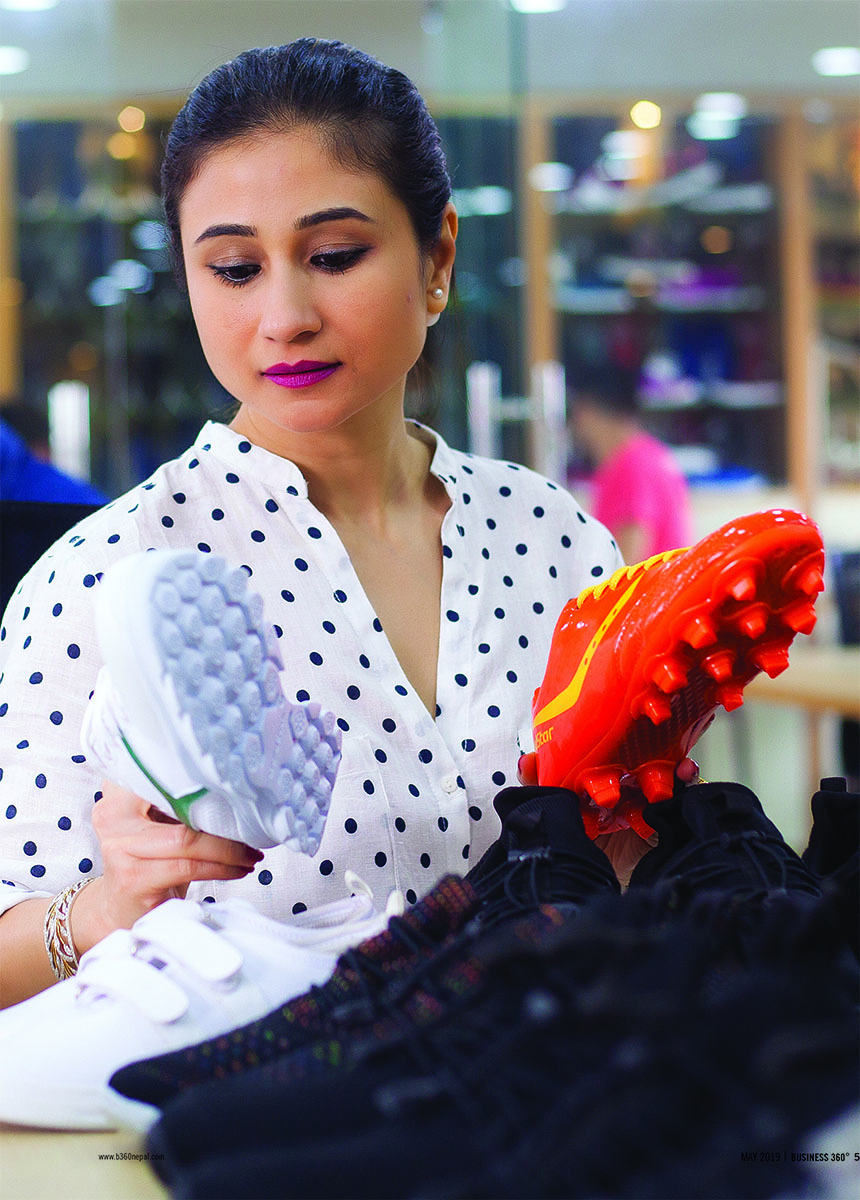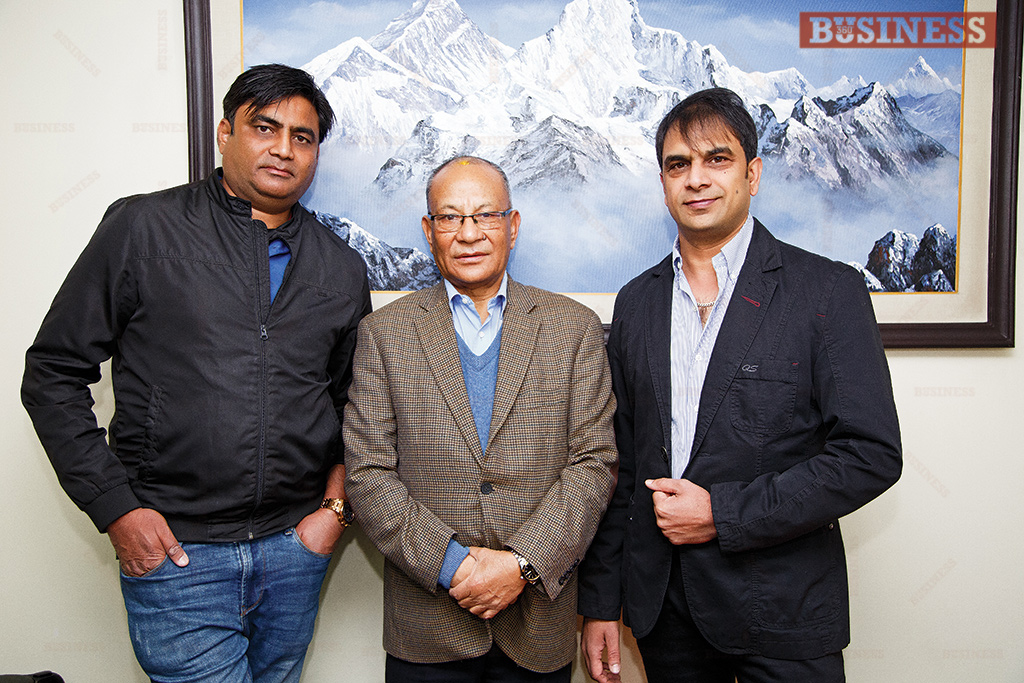
GOLDSTAR CONTEMPORISING ITS IMAGE FOR BUSINESS SUCCESS
Text by Sajeet M. Rajbhandari Founded almost four decades back, Goldstar shoes has become a household name. Known for their rugged durability and value for money, Goldstar footwear has built itself to become the quintessence of how Nepal walks. Something that is of appeal to both older and younger generations, Goldstar in recent years has transformed its market perception of a classic no-nonsense Nepali sneaker to a shoe company that’s hip and trendy while keeping its durable and affordable identity alive. Here’s how Goldstar went from making textbook trainers to the new vogue for footwear.
History
Modern Slipper Industry Pvt. Ltd and Kiran Shoe Manufacturers came to life in the mid-70s as a company that manufactured flip-flops and slippers. It wasn’t until 1990 that the company decided to launch what would be one of its most successful endeavors’: a mid-priced, value for money, brand that went by the name of Goldstar.
Back then Goldstar shoes became hugely popular with the masses as a home grown brand. The cheap durability it offered catered exactly to the needs of the base of the consumer pyramid. Not only inside the country but also in India, shoppers could pick up a pair for less than Rs.300. However, history took its toll on this monumental brand and Goldstar became wrongfully associated with Maoist insurgents due to the heavy use of their products by insurgents during the civil war. Conditions became critical as the government kept a tight rein on the company for fear that the shoes were playing a part in fueling the rebellion. Regardless, the brand stayed true to its purpose of providing good budget friendly shoes.
Transformation
According to Vidushi Rana, Director of Marketing and Branding at Kiran Shoes, change was imminent; for the brand to survive, the ability to change and adapt to newer consumer demographics became a mandatory skill. While Goldstar was always wildly popular as a name, the newer generation of Nepali consumers were either unaware of the where they could get a pair or weren’t really onboard with the utilitarian design that the old-school Goldstars rocked. Not everybody was going to head out to a wholesale shop in Indra Chowk to buy pair of shoes any more. This was a key reason for the family run brand to really focus on marketing themselves better and to refresh their product lineup to suit the needs of today’s more fashion conscious consumers.
Revamping the brand
To refresh a brand that has set the benchmark for an entire industry, you’ve got to stick to your roots. One thing that Goldstar made sure of not changing was their mantra of affordability and durability. While the new products are far different from what Goldstar initially produced, it still upholds the foundation on which the brand was built upon.
When it came appealing to the newer generation of consumers, one of Goldstar’s key steps was to come up a whole new range of products;
something that had its pulse on the youth of the country. They did so by forming a team from ground up that would study the market and create new designs every week.
Today, Goldstar has its own design cell that is solely dedicated to producing new designs that will cater to the ever growing demands of present day consumers. With a lineup that includes the G10 targeted at GenX, their recently launched PU series consists of slippers and sandals for the summer, and velcro shoes for children. Goldstar ensures their products fit the needs of a diverse demographic. In fact, the brand even went on to refresh their already successful line of school shoes.
But expanding their product lineup wasn’t the only thing that Goldstar did; they felt the need to connect with the people. They wanted people who wore their shoes to think of themselves as a part of the brand. In the past 20 years, Goldstar had never required any marketing, but things are different today.
Through social media and other communication outlets, Goldstar made sure it studied how people react to their new designs. They also understood the pride of young people in using a Nepali brand. They also ensured easy availability. Today there are 35 different showrooms across the country besides being available in supermarkets and department and online stores.
Challenges
Running a prosperous company isn’t only sunshine and happiness. At present the Nepali markets are saturated with Chinese counterfeits. Knock-off versions of popular brands such as Adidas and Reebok are freely available. Most of these shoes come into the market evading taxes and are extremely low priced. Goldstar has to survive this competition on a daily basis. Moreover, counterfeit brands replicate their design with names to match so as to confuse the customer. “The company is fighting lawsuits against these companies in Nepal and India” states Vidushi Rana.
The Future
Keeping in mind the unhealthy trade deficit in the country, Goldstar wants to bring change and be ‘the’ company from Nepal. Going international is not easy but Goldstar is already taking baby steps and has just sent its first consignments to Australia and Malaysia. They are working to set up stores in Sydney and Melbourne. The footwear brand is also looking into markets in South America, UK and Africa.To have a fighting chance in international markets, the focus on design development and quality takes precedence. Goldstar is now also producing athletic shoes designed for specific sports and soon will be ready to launch its own line of sports and gym wear.




